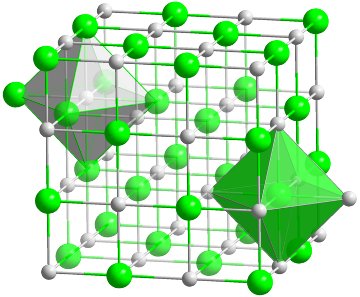
Hafnium
Hafnium General
| Name:Hafnium | Symbol:Hf |
| Type:Transition Metal | Atomic weight:178.49 |
| Density @ 293 K:13.2 g/cm3 | Atomic volume:13.6 cm3/mol |
|
Discovered:
Hafnium was discovered by Dirk Coster and Georg von Hevesey in 1923 through x-ray spectroscopic analysis. The element was called Hafnium after the Latin name 'Hafnia', meaning Copenhagen, the city where the element was discovered. |
|
Hafnium States
| State (s, l, g):solid | |
| Melting point:2503 K (2230 °C) | Boiling point:4873 K (4600 °C) |
Hafnium Energies
| Specific heat capacity:0.14 J g-1 K-1 | Heat of atomization: 621 kJ mol-1 |
| Heat of fusion:27.2 kJ mol-1 | Heat of vaporization : 575.0 kJ mol-1 |
| 1st ionization energy: 658.5 kJ mol-1 | 2nd ionization energy:1440 kJ mol-1 |
| 3rd ionization energy:2250 kJ mol-1 | Electron affinity:0 kJ mol-1 |
Hafnium Oxidation & Electrons
| Shells:2,8,18,32,10,2 | Electron configuration:[Xe] 4f14 5d2 6s2 |
| Minimum oxidation number:0 | Maximum oxidation number:4 |
| Min. common oxidation no.:0 | Max. common oxidation no.:4 |
| Electronegativity (Pauling Scale):1.3 | Polarizability volume:16.2 Å3 |
Hafnium Appearance & Characteristics
| Structure:hcp: hexagonal close pkd | Color:silvery |
| Hardness:5.5 mohs | |
|
Harmful effects:
Hafnium is considered to be non-toxic. In powdered form it is pyrophoric (can ignite spontaneously). |
|
|
Characteristics:
Hafnium is a lustrous, silvery, ductile metal. Chemically it is similar to zirconium. Hafnium resists corrosion due to the formation of an oxide film on exposed surfaces. It is unaffected by all acids (apart from hydrogen fluoride) and all alkalis. Hafnium reacts with the halogens to form tetrahalides, and at high temperatures it reacts with carbon, boron, nitrogen, oxygen, silicon and sulfur. Uses: Hafnium is used for nuclear reactor control rods because of its ability to absorb neutrons and its good mechanical and corrosion resistance qualities. It is also used in gas filled and incandescent lights. Hafnium alloys with several other metals, such as iron, niobium, tantalum and titanium. Hafnium-niobium alloys, for example, are heat resistant and are used in aerospace applications, such as space rocket engines. |
|
Hafnium Reactions
| Reaction with air:mild, w/ht ⇒ HfO2 | Reaction with 6 M HCl:none |
| Reaction with 15 M HNO3:passivated | Reaction with 6 M NaOH:none |
Hafnium Compounds
| Oxide(s):HfO2 | Chloride(s):HfCl4 |
| Hydride(s):HfH2 |
Hafnium Radius
| Atomic radius:155 pm | Ionic radius (1+ ion):pm |
| Ionic radius (2+ ion):pm | Ionic radius (3+ ion):pm |
| Ionic radius (2- ion):pm | Ionic radius (1- ion):pm |
Hafnium Conductivity
| Thermal conductivity:23.2 W m-1 K-1 | Electrical conductivity:3.4 x 106 S m-1 |
Hafnium Abundance & Isotopes
| Abundance earth's crust:3.3 parts per million by weight, 0.4 parts per million by moles | |
| Abundance solar system:1 part per billion by weight, 0.01 parts per billion by moles | |
| Cost, pure: $120 per 100g | |
| Cost, bulk:$ per 100g | |
|
Source:
Hafnium is not found free in nature but is found in most zirconium minerals at a concentration of between one and five percent. Commercially, hafnium is produced as a by-product of zirconium refining. This is done using the Kroll Process, reducing the tetrachloride with magnesium or with sodium. |
|
|
Isotopes:
Hafnium has 32 isotopes whose half-lives are known, with mass numbers 154 to 185. Of these, five are stable, 176Hf, 177Hf, 178Hf, 179Hf and 180Hf. The most abundant is 178Hf at 27.3%. |
|
Hafnium Other
|
Other:
|
|
Prev: Lutetium Next: Tantalum |